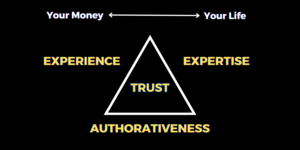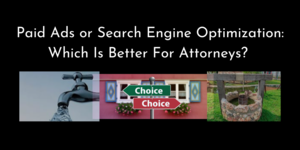Lucky #7
I’ve been talking about this in earlier newsletters, but kudos to @1827Marketing!
(Here’s a link.)
Social listening, rather than social monitoring is critical to any social media marketing strategy across all platforms, but it's particularly easy to implement on Twitter. https://t.co/cdTe5NFe1v #DigitalMarketing #Marketing #SocialMedia pic.twitter.com/lhO1Iu40rU
— 1827marketing (@1827marketing) August 21, 2020
I have been frustrated watching businesses and content producers using automation as replacements for building relationships. I thought 1827’s differentiation of social listening versus social monitoring was distinct.
Monitoring is the act of watching for certain signals or characteristics with the overall objective being your planned reaction when that event occurs.
Listening is a much more active endeavor whereby you are hearing what is being said giving it consideration.
This difference can be easily spotted when viewing the proliferation of automated responses on social platforms. Whether it is immediate sales interactions getting fired with the simple act of following someone or automatic messaging fired based on keyword usage, there is no connection. All interactions are transactional and patently inhuman.
It is unfortunate to see companies and individuals behaving in this manner. It represents an attempt to use direct mail or email spam strategies on platforms and in an environment predicated on relationships.
Seriously, it is simple laziness and doesn’t produce long-term success. Just stop!
Who gets the Victory Royale: Apple or Epic?
For the sake of transparency, I am a proud Android user who uses Windows (and Linux) working in software development using Microsoft products. I’m not an Apple guy & have been known (in the past) to jokingly refer to them as “Fruit Toys”.
That said, the whole In-App purchase debate as it relates to Apple’s App Store is really coming to the forefront recently. Representing a huge chunk of Apple’s revenue, this topic is and will continue to be a big deal for a while. It’s definitely something to watch.
The most-recent chatter involves Apple’s multi-front battles with numerous companies who have been getting delisted from the App Store due to conflicts with Apple and it’s terms.
- Epic delisted for introducing in-app purchases into the Fortnite game
- WordPress delisted due to their refusal to introduce in-app purchases
- Recently uncovered deal between Apple and Amazon related to Prime Video
Apple vs Epic
Epic violated Apple’s App Store terms by introducing its own in-app purchasing capability within the Fortnite game itself. It is no surprise why a game developer would want to do this because Apple gets 30% of revenues for purchases through their App Store (as well as in-app purchases facilitated through the App Store platform).
The real question to be asked here is ‘Who owns the relationship with the user?” All content producers (game developers, blog owners, email newsletter editors, etc) use platforms to attract and/or serve an audience. It’s much easier being “found” in the App Store or on Facebook or through someone else’s customer list than it is to build one’s audience from scratch. We all do it!
That said, there is one fundamental point that we all must remember. So long as you are communicating on a platform, they might be in your audience, but they are their users!
It’s no surprise what Epic is trying to do, but their app still runs on Apple’s device and Apple controls how content is delivered to those devices through the App Store. While there is a large, rabid fanbase for the Fortnite app (and many of them might have been Fortnite players before the app was available on iOS), the reality is that they would not be playing it on their standard iPhone or iPad had they not gotten it via the App Store.
My prediction: Apple wins (legally, but possibly not from a publicity standpoint) due to the fact that the app is installed and updated through their App Store. You cannot go into Walmart, buy a folding table, pitcher. lemons, sugar, cups, and napkins then set up your own lemonade stand on Aisle #12 either!
Apple vs WordPress
This situation is different in that Apple is punishing WordPress for not providing add-on features for in-app purchases. So effectively, Apple is complaining that WordPress’ app only contains free features.
While it is true that WordPress itself has purchasable add-on features and functionality available on their website, their iOS app simply doesn’t offer them.
A user using the WordPress iOS app can fully create a fully-functioning website for free which aligns with their corporate mission of enabling users a no-cost entry point to publishing their content via the web.
If the user wants to access any of the paid features or functionality, they have to purchase them via the WordPress site.
From a logical standpoint, WordPress has a stronger position than Epic. Both are access points for users to connect to server-based content that the companies (not Apple) publishes. However, in Epic’s case, there is no differentiation in the game whether you access it via Apple, Xbox, PlayStation, etc. In WordPress’ case, they specifically developed their iOS app with a minimal feature set that intentionally did not include in-app purchases.
Outcome: WordPress is introducing in-app purchase capabilities.
Note: This highlights the power inherent in owning the users! WordPress’ case was probably winnable on the merits that an app developer should be able to determine what features their product does or does not support. That versions on different platforms might support different capabilities should be their decision. That said, they apparently decided that it was easier and cheaper to cede to the demands instead of fight against them.
Update:
Just today, I noticed the following Tweet from @photomatt from WordPress. (Here is the link.)
I am very grateful that folks at Apple re-reviewed @WordPressiOS and have let us know we do not need to implement in-app purchases to be able to continue to update the app. Bad news travels faster than good, usually, so please consider sharing that they reversed course.
— Matt Mullenweg (@photomatt) August 23, 2020
Based on this (and the subsequent thread that follows it), Apple has relented and will allow WordPress to leave their app as is. It seems as if this problem arose when it found that a feature within their app indeed could enable a user to purchase additional functionality. It was reportedly an unintended feature that WordPress is removing and, as a part of this agreement, will work to avoid in the future.
This seems to be the best outcome and kudos to Apple for agreeing to it.
Apple (obviously not) vs Amazon
This one is likely to get Apple (and Amazon) into trouble. While partnering arrangements are commonplace among businesses and producers of content, there is going to be continued and growing interest in this agreement between two of America’s largest corporations. It is almost guaranteed that this is going to draw more investigation from an anti-competitive standpoint.
My prediction: There will be a lot of complaining as this is a pretty clear example of unequal treatment. Since it is an agreement between two massive corporations, there will be immense pressure (both legal, regulatory, and publicity-wise) for action because the number of companies left out of this arrangement is astronomically different (both size & scale) than the two who are participating in it.
It will likely devolve into a legal fight between Apple and Amazon themselves eventually. This is ultimately akin to King Kong and Godzilla teaming up to attack a city. Sooner or later, the behemoths begin fighting one another.
Links
Apple delists Fortnite over In-App Purchases
https://www.cnbc.com/2020/08/21/apple-says-epic-games-ceo-wanted-a-side-deal-for-fortnite.html
Apple forcing WordPress to introduce In-App Purchase features
https://www.theverge.com/2020/8/21/21396316/apple-wordpress-in-app-purchase-tax-update-store
Amazon’s Prime Video App deal with Apple
https://www.theverge.com/2020/7/30/21348108/apple-amazon-prime-video-app-store-special-treatment-fee-subscriptions

Yes, this!
I used this in either a Tweet or blog post previously, but this one has been a rule to live by for at least this week.
Much of the complexity that we encounter, we created. If we didn’t create it, someone else probably did.
The underlying point here is to avoid getting bogged down in the complexity of the overall problem, but get some traction and momentum solving the parts you can address first! Often, once you begin peeling back the layers, you keep finding solvable parts and the problem itself becomes solvable.
Do not confuse this with a problem I often see where Six Sigma / Lean practitioners “solve” parts of a problem by deciding that the activity shouldn’t be done or someone else should do it. This is a pattern that I’ve labeled “Leaning your job; not the work” and you want to avoid it!
The way I handle these exercises is to follow this simple model:
- Get with the people who have or are impacted by the problem
- Identify the most painful or biggest part of the problem that you understand and can solve
- Work out your solution for that part
- Determine if the solution can provide enough measurable relief to be seen as an improvement unto itself
- If so, implement it at Step #5
- If not, continue the exercise until you recognize measurable benefits
- Put the solution in place and measure your results
- If this is still your most painful or biggest issue, repeat and adjust as needed
- If not, repeat with the next most painful or biggest component
While simple, this framework is very effective in decomposing large, complex issues into manageable & solvable concerns. We keep ourselves “stuck” when we try to solve things we don’t fully understand and make large-scale changes that are either unmanageable or produce their own unintended consequences.
Here are a few other things that I have caught my eye this week! I included a quick synopsis, but I would love to hear your thoughts on them as well!
How To Get Backlinks
This is a good article from Ahrefs.com on getting backlinks to your website. Quite a bit of the content is referencing the use of their Site Explorer tool. You can perform many of the same or similar actions using other tools like SEMRush or (my favorite) Ubersuggests.
Neil Patel – SEO Unlocked
I worked through Neil’s material a few months ago and really liked it. It was probably some of the best organized free material on SEO practices that I’ve seen. If you’re interested in the topic, I would definitely recommend it as the lessons are short, concise, and value-focused.
7 Google Tools To Use When Conducting Keyword Research
I’m definitely doing more Google Keyword & Key Phrase research recently. I especially liked the mentions of the additional tools
As always, if there are posts, articles, etc. that you found valuable, share them in the comments below or shoot me an email.


